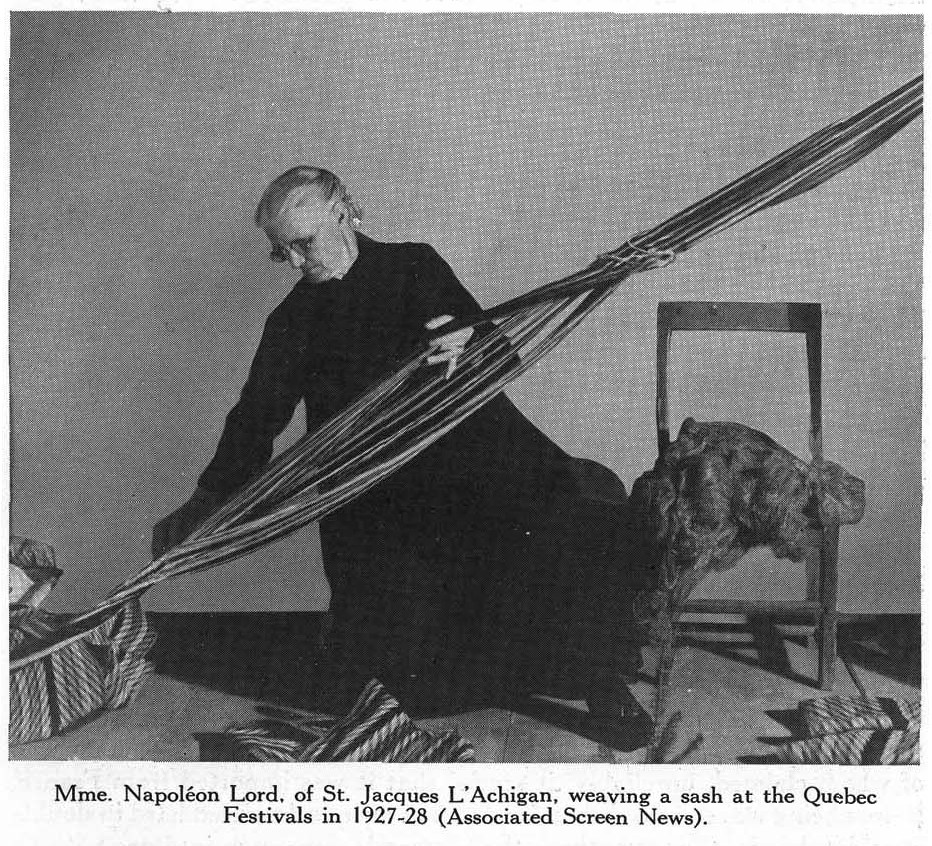| French Canadians Common Sash |
|
Marius Barbeau’s bulletin, “Assomption Sash” that he authored for the Ottawa: Dept. of Mines, National Museum of Canada is valuable resource for anyone interested in the origins of the arrow sash. It is obvious that extensive research and original interviews were used to prepare this bulletin. A copy of this bulletin can be downloaded from the following url https://www.historymuseum.ca/cmc/exhibitions/tresors/barbeau/mbp0504e.html The bulletin is divided into parts; each part is a pdf file that can be downloaded. Barbeau acknowledges that there are different styles of fingerweaving and different grades of sashes. However, Barbeau makes no effort too explain the differences. He also acknowledges that the amount time required to produce a sash changed. On page 29, Barbeau states “Not a few people, it seems. could make an ordinary sash in a long day”. On page 30, he states “ Now a weaver would not think of making more than a few inches a day. In a Montreal census' for 1825 it is stated that 3 weeks were required by a weaver to make a sash”. Barbeau stops here, without making any attempt to explain the reason for this time difference. After reading the bulletin “Assomption Sash” numerous times I have concluded that Barbeau was not a fingerweaver, therefore he did not recognize that he was observing several very differrent styles of fingerweaving. However, Barbeau does include clues that can be used to explain this difference in the time required to complete a a sash. On page 29--30, “When the sash was of exceptional size and quality, more time was required. Mme. Napoléon Lord used to weave, in a day, 3 feet and 3 inches, that is, half of one sash”. On page 5 there is a photograph of Mme. Napoléon Lord. The photograph shows several sashes. The pattern of the weaving does not appear to be warpface fingerweaving but is more consistent with interlinked fingerweaving. To support this observation I have attempted to produce the pattern using warpface fingerweaving and interlinked fingerweaving. My attempts with warpface weaving were unsuccessful, but when I used interlinked fingerweaving, I was successful. The following photographs illustrate the results of my experiment. The black and white photograph is included to makes it easier to compare my work to the photograph on page 5 of Marius Barbeau’s bulletin. |

|

|
| I was able to weave the sash pictured in less then three days. This was in spite of the stiffness of my hands, which makes it impossible for me to work for more then two hours at a time. Marius Barbeau’s bulletin is the first primary source on the development of fingerweaving that I have found . The results of this experiment and Marius Barbeau’s bulletin has lead me to believe that interlinked woven sashes were the original sashes “common sash” used by the French Canadians and first sashes produced for the early fur trade. |